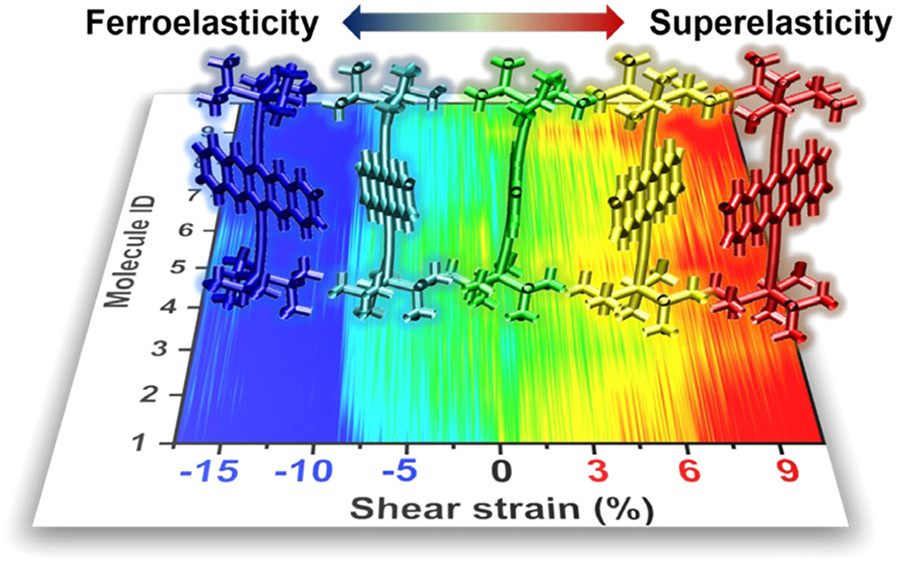RCAC supercomputers help Purdue professor unlock mysteries of mechanics and material chemistry
A Purdue researcher who studies material chemistry is using the Rosen Center for Advanced Computing’s (RCAC) supercomputers to learn more about how materials behave in products like organic electronics and lithium-ion batteries.
Kejie Zhao, professor of mechanical engineering, owns several nodes in the Brown community cluster, which is optimized for communities running traditional, tightly-coupled science and engineering applications. He uses those nodes to explore why a class of materials known as superelastic organic crystals are deformable without sacrificing electrical conductivity – properties that make them well-suited for use in making the flexible and printed devices used in bio and optoelectronics.
This project forms the basis of an NSF CAREER grant awarded to Zhao in 2020. The CAREER is a prestigious award for early-career faculty, and Zhao’s ability to answer the questions set forth in his proposal relies heavily on using Brown and other RCAC clusters.
Using Brown, Zhao has run simulations to understand on the molecular level why this material is deformable and how the electrical conduction happens in the polymorphs.

Zhao has also used the Brown community cluster to study the degradation of lithium-ion batteries. Lithium-ion batteries play an increasingly important role in our daily lives, and are used in portable electronics and electric cars.
Understanding how and why these batteries fail is important to ensure the success of the electronics they’re used for. Zhao and his team are particularly interested in studying the mechanical degradation of these batteries, and are using the Brown cluster to model how mechanical deformities interfere with the battery’s mass transfer process.
“Brown is a critical resource for us because these simulations are computationally-intense and expensive, and it’s not something we could do on our own workstations,” says Zhao. “The cluster is a really important resource for us to run the projects.”
At previous institutions that didn’t have centralized high-performance computing resources, Zhao had to spend tremendous time maintaining and trouble-shooting his group owned clusters. He appreciates the RCAC model, which provides the hardware and expert staff support, and allows faculty researchers to focus on their science.
“RCAC staff have been always helpful since I joined Purdue 9 years ago,” says Zhao. “When I had a question, I just sent an email to the help desk and they very quickly got back to me with feedback. It’s a wonderful resource to have at Purdue and I am very grateful for the timely help of the RCAC staff.”
In another project, applying the computational mechanics, Zhao has collaborated with Bumsoo Han, professor of mechanical engineering, to study why injections such as vaccines cause us pain.
The team’s hypothesis was that the injection causes mechanical changes to the surrounding tissue, like swelling, which depends on parameters such as which biologic is used, the dose, and the rate at which it’s injected, and that the swelling then gives our brain the perception of pain.
Han’s group fabricated an engineering tissue to mimic human tissue and ran experiments on that material, while Zhao’s team ran theoretical modeling to understand how mechanical changes to the tissue can regulate neural signals.
To learn more about Brown and other Research Computing resources, contact rcac-help@purdue.edu.
